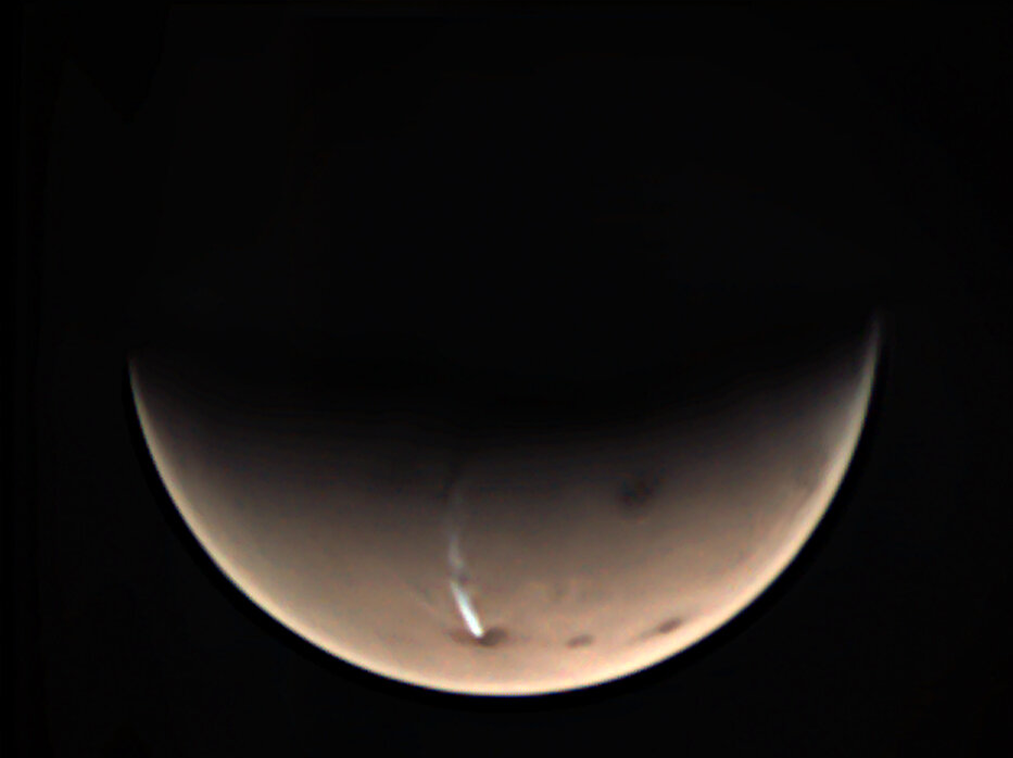Mysterious Martian cloud reappears above Arsia Mons volcano
The cloud made an appearance over the volcano before, in 2018

A mysterious long, thin cloud has made another appearance over a volcano in Mars.
The gaseous body was seen floating over the 20-kilometer high Arsia Mons volcano on the Red Planet, in images captured by the ESA.
The volcano itself has not been active for 50 million years, so it is incredibly unlikely that it is the cause of the cloud.
The cloud is made up of water ice, but does not seem to be from volcanic activity. The stream forms as the airflow is influenced by the side of the volcano that does not face the wind, baffling scientists.
It has been named Arsia Mons Elongated Cloud (AMEC), but the mysteries of why it is formed, and for how long it has been appearing and disappearing, are still unknown.
“We have been investigating this intriguing phenomenon and were expecting to see such a cloud form around now,” explains Jorge Hernandez-Bernal, PhD candidate at the University of the Basque Country.
“This elongated cloud forms every Martian year during this season around the southern solstice, and repeats for 80 days or even more, following a rapid daily cycle. However, we don’t know yet if the clouds are always quite this impressive”.
A Martian year is approximately 687 Earth days. The southern solstice is when the Sun is in the southernmost area of the sky. During this period, in the early morning, the cloud grows for three hours before quickly disappearing again.
This is not the first time the cloud has made an appearance. The strange cloud was seen in 2018 where it stretched over 1,500km of the planet’s surface in late September, before disappearing in mid-October.
Nasa's groundbreaking decade of space exploration: In pictures
Show all 10Most spacecraft orbiting Mars only make observations in the afternoon, but the image of this cloud can be captured by the Mars Express – launched in 2003 – because it is in a high elliptical orbit.
“The extent of this huge cloud can't be seen if your camera only has a narrow field of view, or if you're only observing in the afternoon” said Eleni Ravanis, who works with the camera equipment on the Mars Express.
The craft’s high orbit, “coupled with the wide field of view of the VMC instrument [this] lets us take pictures covering a wide area of the planet in the early morning”, Ravanis continued.
Subscribe to Independent Premium to bookmark this article
Want to bookmark your favourite articles and stories to read or reference later? Start your Independent Premium subscription today.

Join our commenting forum
Join thought-provoking conversations, follow other Independent readers and see their replies